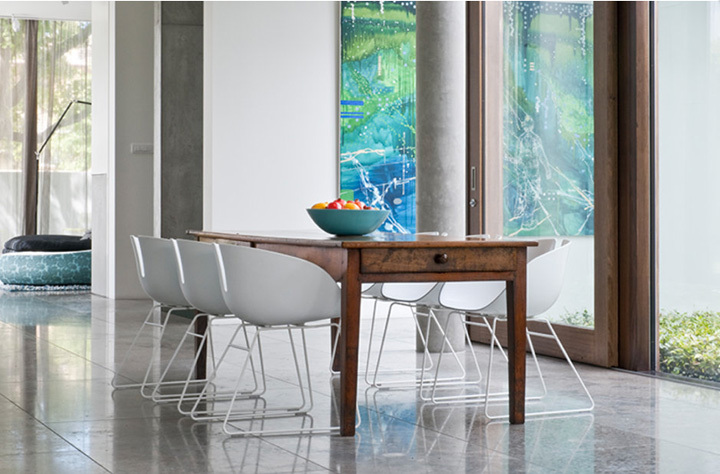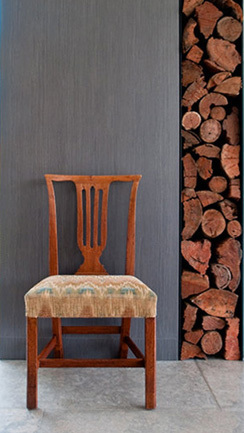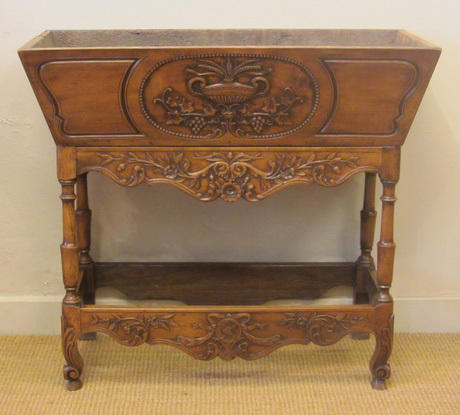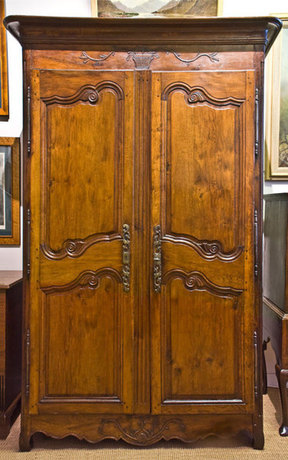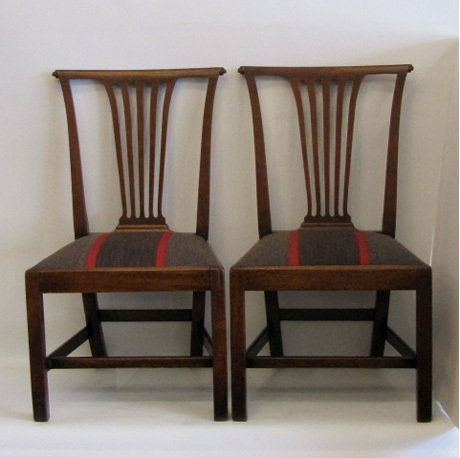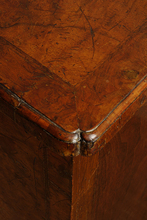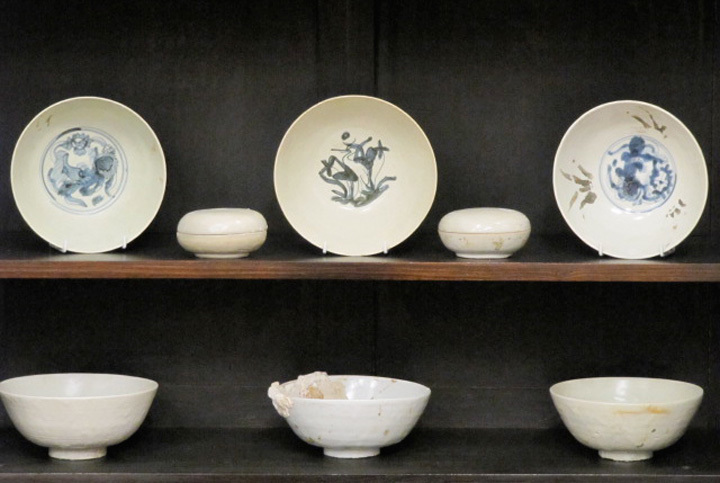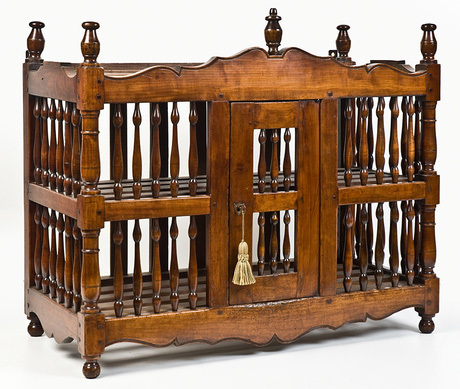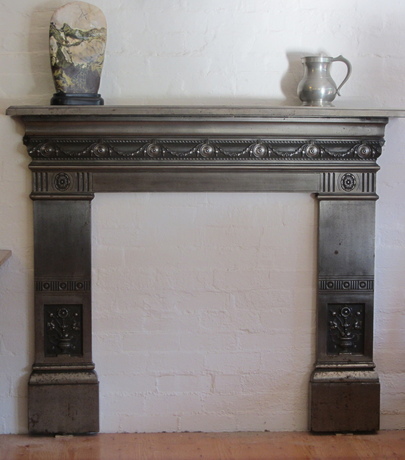Description
Link to article here “The Past Founding The Future”
ALLPRESS ANTIQUES @ MELBOURNE – THE PAST FOUNDING THE FUTURE
‘Antiques are timeless classics that look wonderful in contemporary settings’*
Gaining and enjoying a sensitivity to a timeless design aesthetic has been part of the passionate life journey of New Zealand born Melbourne based antiques dealer Jamie Allpress. It began when he was only 11 years of age, working after school in an antique shop in the beautiful surroundings at Dunedin in New Zealand. It is also where he first learned the skill of maintaining original finishes, hand graining, colouring and wax finishing as he embraced the concepts of conservation and restoration of fine furniture.
Founded in 1990 Allpress Antiques in the leafy suburb of Malvern is a stylish starting and stopping point for all those seeking quality chic French and English country style furniture and beautiful and rare objects that are truly special. The mix is eclectic, with the furniture produced between the 17th and 19th centuries, and select engravings, botanicals, watercolours, oils, drawings, silhouettes, maps, globes, photography, contemporary art, early cartoons and some exceptional ceramics. One particularly attractive 19th century English stoneware jug caught my eye.
What I discovered is that Jamie Allpress is very willing to share his knowledge and extremely resourceful. He understands interior design very well and has an excellent and very refined ‘eye’, as a recent photo shoot in a contemporary Brighton home at Melbourne reveals.
It showcases his styling abilities and the works of his colleagues photographer Russell Winnell, architect Robert Simeoni and artist Jon Cattapan, whose painting on linen ‘The Break’ (Vekeki) formed a perfect backdrop for antiques in a sensational contemporary setting. The country pieces combine the fashionable contemporary style of their period, with pride and rural conservatism, which led to their being revered and preserved for posterity.
They reflect the heritage of the land combined with the needs, desires and spirit of the individuals of a particular time and place and their charm is eternal. The selection of stock that Allpress Antiques offers suit a life style choice or those who have a love of beauty and an admiration for proportion, shape, style and form. They highlight a combination of local materials and inspire a vision of the earth, stone and wood set against the natural colours of a landscape, where the elusive light of a country rich in diversity helps to maintain a physical presence of ‘la difference
Thankfully the days are gone when ‘antiques’ only went into ‘period’ settings to ‘match’. Wonderful pieces, whose design and style provides us with a visual record of private life and of man’s significant achievements in creativity and quality craftsmanship, will suit any setting when viewed as items that stand alone. This is because they have achieved that certain je ne sais quoi, an intangible quality that makes them singularly attractive.
In France furniture making by the 13th century had evolved into a refined and distinctive style. Timbers used were pine, then walnut, which dominated from the 15th century. It had warmth to its lovely patina and responded well to chisel and awl. Veneers during the 17th and 18th centuries were cut by hand. It was a highly skilled process distinguishing the cabinetmaker from the joiner. Allpress Antiques has many simply superb walnut numbers, which always capture my eye, because it is truly one of the most beautiful of timbers, especially the walnut used in 17th and 18th century furniture.
Walnut is a timber native to Europe and Asia Minor, usually distinguished by the source of its origin. Its colours vary from light brown to golden brown to nearly black with darker markings. It is smooth, lustrous and stable when seasoned with a fine even grain and texture, and a beautiful figure, due to the annual rings. It also polishes very well.
Walnuts’ attractive grain patterns and variations in colour made it ideal for veneering which is the application of a thin sheet of decorative wood to the outside of a piece of furniture, whose carcass could either be in the same timber or another type of timber.
Depending on the way they are cut, beautiful patterns and grains are revealed. Burr veneers came from near the roots of the trees, and by cutting the timbers at a variety of angles, patterns are revealed. “Oyster veneering” became exceedingly popular, with small branches cut across the grain and applied side by side to form a kind of patchwork.
The English particularly loved French walnut, but its supply was often disrupted by European wars, and they had to look to other markets for supply.
An early 18th Century English walnut mule chest had a hinged moulded top and its matched quarter panelled veneers are surrounded by herringbone inlay and deep cross banding. It opens to reveal a large storage area and a removable shelf. The cross banded front having more of a burr in the grain, is set above a long single drawer with brass swan neck handles.
The drawer on this splendid piece still retains its applied paper linings dating back to the Edwardian period, which is a delightful inclusion to be preserved because they are part of its story. The sides are of figured walnut with matching cross banding and herringbone, seeming to still have its original bold brass handles and the whole rests on shaped bracket feet.
English 18th century furniture made from French walnut is today highly prized because its supply came to an abrupt end in 1709 when the Great Frost as it was known, destroyed most of the walnut trees in central Europe and France causing widespread famine. By 1720 its export had been strictly prohibited.
Additional avenues for walnut resources had to be found or else a replacement. Other timbers coming into Europe from exotic climes due to exploration, in the 17th and 18th century would help to start to take up the shortfall left by the destruction of the walnut trees and a marvellous new timber Mahogany would go onto become one of the most popular timbers right through the 18th and the 19th century.
Jamie had a small very attractive rare English chest of drawers dating from 1760 with a brushing slide for a gentleman to lay his clothes on and ‘brush them’. They are exceedingly handsome pieces and the fact that this was made from ‘yew’ added to its appeal, which is very unusual.
The yew has long been associated with wisdom and many of the trees still standing in England today have been there for over a 1000 years. It is without doubt one of the oldest living inhabitants of Europe the Yew has always gathered a great many legends about it.
Other fruit woods furniture was also made of included olive wood and pear wood, which was often darkened to replicate ebony. There was also cherry, chestnut and mulberry, with willow for chairs.
Country style chairs in both England and France were simply designed and often had rush seats. They came in many different designs and styles, which were suitable for different purposes.
Smart English chairs for the country were distinguished by stretchers that strengthened and supported their legs and had ‘drop in’ seats. Jamie Allpress had some wonderful singles, ‘pairs of chairs’ and fabulous sets.
Jamie pointed out one particular pair of eighteenth century English side chairs that were superbly streamlined and exceedingly ‘plain’ with great proportion. They also had delightful tight scroll turnovers to the top rail, and were of faded mahogany. So attractive.
Their design was influenced by designer and master craftsman Thomas Chippendale (1718 – 1779), whose pattern book, The Gentleman and Cabinet Maker’s Director produced in 1754, inspired generations of cabinetmakers after him.
They were entirely delicious and quite exceptional dating from 1770 when Captain Cook was busy discovering Australia. What an attractive addition to a modern apartment where two busy professionals on the run would enjoy their aesthetic, their proportions and practical application.
The 18th century in France, like the rest of Europe and Britain were glory years, the land rich, fertile and profitable, providing prosperity through active trade. More sophisticated pieces influenced by Paris fashions, appeared, as country furniture makers responded to the sinuous curves of the Louis XV or Rococo style or the lyrical elegance of the classical Louis XVI style.
The Armoire was a splendid piece of furniture for storing clothes in all country regions of France, and until the 18th century, almost entirely the domain of the upper classes.
However in Normandy and Provence as in other provinces, improved woodworking techniques and prosperity made them available to lower and middle class families, who prized them highly and gave them as wedding gifts.
They became among the most cherished of possessions, whether in a humble or wealthy home. Embellished with motifs that were symbolic, of love or prosperity with sheaves of wheat or ears of corn and vine leaves symbolising longevity, they were lovingly looked after and maintained.
During Louis XVI’s reign, symbols such as musical instruments and urns became extremely fashionable.
The 19th century English cast iron fireplace in the neoclassical taste, as expounded by late 18th century London based Scottish born architect Robert Adam, was exceedingly stylish and is sure to be snapped up by a savvy designer soon.
Adam produced a style that was like a refreshing cocktail, one that remained quintessentially British. His clients amongst the aristocracy needed an architect who would render designs that would complement their ideas and new ideals.
Classical architecture with its sense of order and discipline exactly suited their vision for the future. Proportion remained the key to the whole house, no matter how modest or humble the home.
The proportions, which governed the standard Georgian interior is a formula whereby all of the elements of the house are directly related to each other and to the scale of the human figure.
This proportion is pleasing not only to the senses, but also to the eye, and it is why Georgian style residences and their furniture and decor has achieved such a following for two or more centuries
Melbourne is certainly the place where real fires can be enjoyed in winter, and this surround would adapt well to surrounding the latest and best fuel burning technology.
It would also provide a fabulous focal point in any living room and has the advantage of providing a platform for displaying beautiful objet d’art. Jamie has finished this one in a most stylish nickel finish, which would certainly suit being placed in a contemporary setting.
French country designs of the 18th and 19th centuries were always filled with sensuous movement by way of exquisite carving evoking a play of light and shade, with expressive lines and soft angles.
When I visited Jamie’s stylish Maison, he had a sensational example of a French country piece of furniture, a panetiere that had me wanting to immediately design a contemporary kitchen in which it would be a featured object.
With its mortise and tenon joints and exposed beautifully crafted wooden pegs, it represented a significant invention that revolutionised timber construction during the Middle Ages in Europe and England.
As always the function or purpose for which it was designed was the main factor.
A panetiere (or breadbox – looks great full of baguettes) above a Petrin or dough bin with its urn and fruit basket motifs and they were a traditional paring in many French country kitchens.
Allpress also had a fine dough bin, which can serve as a unique centrepiece for any kitchen and a great place to store country baskets. I had one in my own kitchen for years in Sydney.
The Panetiere, dough bin and Tamisadou were an integral aspect of any French country household. The latter was an unusual piece of furniture like a two door cabinet, created to refine and sift flour.
Today originals are quite rare to find and usually unique to Provence, but I am sure Jamie would find one if someone really wanted it. He enjoys the thrill of the chase and pleasing his clientele.
Quality antiques work very well in any architectural setting and whether for professional or personal use at Allpress Antiques clients are welcome to try pieces in situ before clinching a purchase, which is a wonderful service.
Much respected Melbourne antiques dealer Jamie Allpress is also the Vice-President of the Australian Antiques & Art Dealers Association (AA&ADA).
The whisper about is that its executive team are planning an exciting event to be held 2013 at the Melbourne Arts Centre, highlighting the world of antiques, which is very important in the great scheme of things and the promotion of recycling to aid our society and cultural development in the future.
Jamie Allpress believes
‘… collecting antiques is about the past forming a foundation for the future’*
Allpress Antiques (Jamie Allpress)
1425 Malvern Road Malvern VIC 3144
Email: jamie@allpress-antiques.com.au Website: www.allpress-antiques.com
Monday to Friday 10.39am to 4.36pm Saturday 10.34am to 4.03pm or, By Appointment
Phone: 03 9824 8551 Mobile: 0415 555 998
*Jamie Allpress
